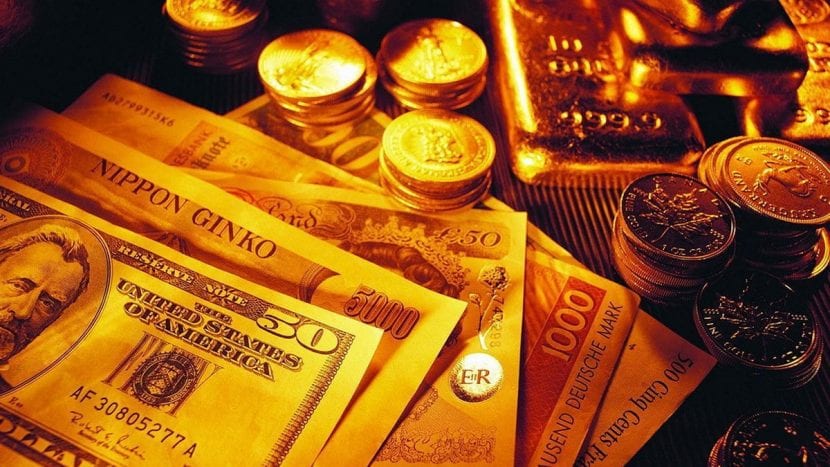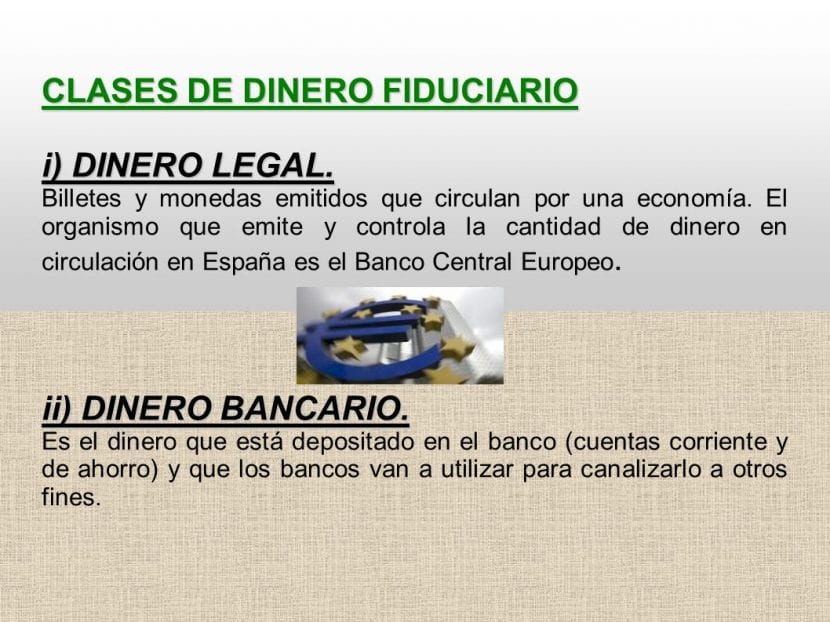
Money is by far the most widely used human invention. And it is that when we think about it, practically every aspect of our life is governed based on this same, from food to health, they require money. But before I can define what it is fiat money, which is the main topic of this article, you have to answer two questions: What is money? And above all, how do we know the value of money?
What is money
To define money in a simple way we can use the following definition: money is any asset, or also a good, which is valid as a means of payment to be able to carry out the exchange of goods. In other words, it is everything we use to buy something; in such a way that not only coins and banknotes are valid as money, but also electronic transfers or debit cards. But what makes the money valid, why can't any person or institution print tickets or use cards?
For the economic system can remain stable it is necessary that there is an issuing entity that supports the value of said money. At present the entities that are in charge of having this role are governments, and the way in which they regulate the validity of money is through current legislation. So we have already located a first person involved in the creation and valuation of money, but although the government regulates and supports the existing money, does it issue it?
The answer to the previous question is a no, since banks are the entities in charge of various aspects of money, let's see what they are. The first thing that central banks and mints take care of is the regulation and also the control of the monetary policy that remains in force and that allows money to be kept under constant surveillance and control. Second, these entities are also in charge of creating the physical representations of money, such as banknotes or debit cards.
How do we know the value of money?

Now that we know what money is, let's analyze a little of its history to know what it is that defines money. value of a coin or bill, to later be able to define fiat money. At the beginning of human history, when there was no money, we bartered, that is, we exchanged a product that we had, for one that we wanted or needed. But this system was not very efficient as there was no reference point that would value all possessions in an objective way, but rather, the value of things is offered by the person's negotiating capacity.
Later the value of things was standardized making use of precious metals; The reason for this is that these metals were themselves a benchmark when valued by people. In addition, they offered the advantage of being limited, in such a way that it was easy to control people's purchasing power, since not everyone could create a gold or silver coin. And although the value of these materials has not decreased, it is interesting that we notice that someone came to replace it, the well-known paper money.
It is at this point that our question is answered, and it is that the value of paper money is defined by the precious metal reserves of the government that issue the banknotes. And to date this system is still in force, as the central entities continue to maintain their precious metal reserves.
Now that we have understood the above, that money is the medium of exchange, and that its value is given by the support that a central entity offers, we can go on to define the fiat money.
What is fiat money?
This type of money is also known as fiat money, and it is money (medium of exchange) that obtains the value, not from the backing of the reserves of a financial institution, but rather based on the faith or trust that the community has. Although it may seem strange, the truth is that it is the monetary system that currently predominates throughout the world. But its origin is not current.
Fiat money began to be used in China, and it was in the year 1971 when the time when precious metals defined the value of money can be ended; It was then that the Bretton Woods agreements broke with the system that supported the price of the dollar, through precious metals.
Now, this makes a lot of sense in what we live today; and the clearest example that we can see is the value of the euro with respect to other currencies. To clarify the matter a bit, if governments still backed the value of money with precious metals, currencies would always remain at a constant value. It is when fiat money is born that it begins to congratulate a series of currencies that, instead of basing their value on an endorsement, base their value on the relationship that exists between one currency with respect to the others that exist.
It is at this point where we can already clarify that there are two types of money, commodity money which has its value on the basis of having a counterpart such as precious metals; and fiat money, which has a value before the people and before the rest of the governments, based on the declaration of the issuing government. And to be able to summarize this in simpler terms we can mention that the euro has value because, in this case, a series of governments have agreed to give validity to this currency; so that when a government does not declare that a currency is legal, it will not be valid as a currency, that is, we will not be able to exchange it, or buy anything.
Fiat money
The European central bank, which is the one that has declared that the euro is valid and accepted as currency, defines fiat money as that which is established through the imposition of some governmental legislation that has the purpose of directing the commerce and economy of the governed place towards a means of Definite exchange, this is whether the dollar or the euro or the yen is preferred.
Now that we know what it is fiat money, we can move on to another point of great interest and that is how we use fiat money, as well as what tools are made available to us in order to facilitate the manipulation of this asset.
Tools for fiat money

Previously, when gold was the basis of the economy and it was the one that defines the value of each monetary unit with respect to the gold support that existed in banks, the way in which transactions were carried out, or purchases, was by defining a fixed value to the currency, so we knew that a 20 currency note was backed by a sufficient value to be able to buy 20 pencils, and if someone tried to buy those pencils using either another currency or another type of asset, simply It was not valid as a purchase, but rather as a barter.
However, with the arrival of fiat money The tools are emerging that allow us to exchange products without the need to have a ticket or physical currency that were previously essential. Some of these tools are checks; These checks might look like nothing more than a piece of paper with a legend indicating a number. However, when this paper is backed by the financial institution it becomes money, by definition a means to make purchases.
Another tool we have to be able to control fiat money are promissory notes. When we make a sale, but our buyer does not have the necessary money to make the purchase, we can use a promissory note, which is a legal document that guarantees us as sellers, that the buyer agrees to pay the amount stipulated in the same document. . So when we pay attention to these types of documents we realize that what we are receiving is money, money that has a value based on the confidence we have that said person will make the payment. This is why promissory notes are documents that can be transferred, in such a way that when we do not have paper money, we can make the purchase of something using the promissory note.
On the other hand, we can find the rest of legal documents that are of a monetary aspect, such as bank accounts, in which we do not have a paper money that attests that our money is real; rather, the person or institution gives us a purely legal endorsement that this money exists and is valid for when we make the decision to make it count.
Without a doubt, knowing the behavior and history of fiat money will help us a lot to better understand how the economic and monetary system works in the vast majority of countries that made the decision to switch to fiat money.